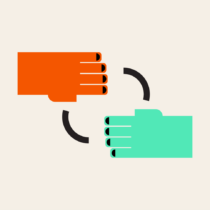How Digital Tools Help Build Your Brand, Part Two

In Part Two of this series we explore the features and benefits of brand management sites and digital tools so you can decide what’s right for you.
While we typically think of digital systems as providing brand support through websites, significant value to brand building can be achieved through creative use of the Internet to manage your brand implementation. How does such a site work?
Typically developed through internal resources or in partnership with a firm that has experience developing management systems, these sites deliver brand identity strategies and messaging to educate and inspire your employees, provide guidelines, and demonstrate best practice examples for branded communications and campaigns. They also act as a depository of all brand assets, which typically include:
- Logo or signature artwork
- Brand guidelines and best practices
- Design templates
- Approved imagery, photography, videos, and other graphic elements used to represent the brand in a distinctive fashion

In addition to a site map of the content and assets to be managed, the implementation steps for execution of a brand asset management system include:
- Mapping the roles of users for the content they are authorized to access
- Defining the platform for web delivery and site design
- Flowing the content into the database, testing, and launch
There are other considerations as well, such as content updates, reporting, and expansion opportunities. All of these features are designed to raise your brand profile in a smart way, efficiently manage your assets, and connect your brand to all of your stakeholders.
Many organizations, such as American Express, General Electric, and Deloitte, have embraced systems that connect all those who contribute to brand management―and each is reaping the many benefits and efficiencies of such systems. Users are primarily employees, agencies, and suppliers focused on the goal of executing brand-building strategies and tactics. These companies are committed to the role of digital management of key brand processes, and they are being rewarded with effective brand messages, empowered brand ambassadors, and great cost efficiencies.
Don’t be intimidated by the scale of these companies or the implementation process for such a system. Using a brand portal is manageable for companies and brands of all shapes and sizes, and it offers all of the same benefits. And, as you think about adding an online brand management system to your company, the key to success is a true understanding of how your content and assets are being used by your marketing and communications teams. This knowledge will help guide the decision on which platforms you should consider using, and it will help inform the right approach for deployment at your company. In addition, the best brand management systems measure the return on investment on such endeavors, further demonstrating the contribution and value this tool can make to your organization.
For more information about brand asset management visit read part one in this series.
identityManager® is an online brand management software created by Monigle. To find out more visit our website or contact us.
Mike Reinhardt is Senior Director, Brand Sustainability at Monigle.


